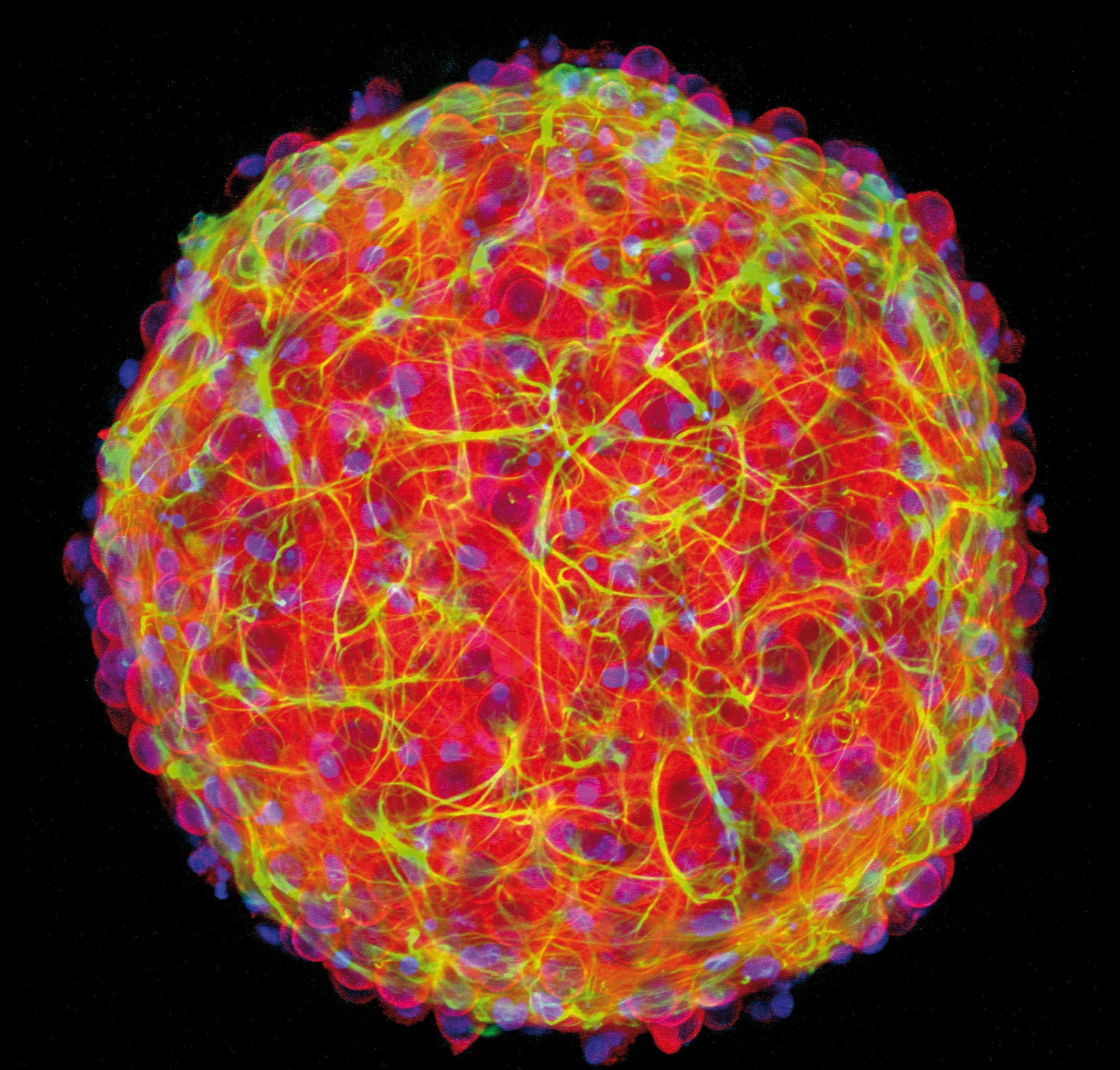A research team led by Diane Hoffman-Kim, an associate professor of neuroscience and engineering at Brown, found a way to use cortical spheroids to study a type of brain injury that develops over time.
PROVIDENCE, R.I. [Brown University] - For nearly a decade, Brown University researcher Diane Hoffman-Kim and her laboratory team have made cortical spheroids, which are basically functional miniature brains.
The three-dimensional cell cultures are versatile models that allow for the study of everything from brain injuries to stroke to glioblastoma. Most recently, Hoffman-Kim's team found a way to use the mini-brains to study the effects of compression injuries.
"Mini-brains have so many research benefits," said Hoffman-Kim, an associate professor of neuroscience and engineering at Brown and a faculty affiliate of the University's Carney Institute for Brain Science. "We're humbled that something this much smaller than the brain can actually mimic diseases - and now injuries."
Compression injuries are often caused by stroke or tumors, but can also be the result of trauma. A ski accident, car crash or soccer collision can, over time, cause blood to pool or tissue to swell and create pressure on brain tissue. Gone untreated, compression injuries can lead to chronic inflammation, kill brain cells and even cause death. Yet this common type of brain injury poses a research challenge, according to Hoffman-Kim. Since damage takes minutes, days or even months to surface, it's difficult to mimic in the lab the conditions of slow, steady pressure on brain cells.
Hoffman-Kim and Haneesh Kesari, an associate professor in Brown's School of Engineering, are partners on a long-term research project, funded by the U.S. Office of Naval Research, to study brain injuries. They collaborated with Rafael González-Cruz, a postdoctoral scientist in Brown's Department of Neuroscience, to zero in on compression brain injuries.
To make mini-brains, González-Cruz uses a centrifuge, a lab instrument that rotates at fast speeds to create an enormous amount of force - enough to separate cells by size and density. Kesari wondered if a centrifuge could also be used to create the kind of pressure that characterizes a compression injury. Yang Wan, a doctoral student in engineering, helped González-Cruz and Kesari work out an experiment design that would allow them to test and measure what happens to mini-brains when they applied different levels of sustained force.

Calculating the speed of cell damage
The team ran batches of mini-brains in a centrifuge for 2 minutes. Wan calculated four specific speeds, along with a control, so the team could test all the centrifuge speeds uniformly.
After batches of brains were spun, researchers counted dead cells and studied injured ones. They repeated these assessments after 2 hours, 8 hours and 24 hours. The 24-hour interval is important, they note, as that's the window when medical intervention would be most helpful in the event of a compression injury.
This study design allowed the team to measure, with precision, the cell damage not only caused by different amounts of force but the amount of damage that unfolds over longer periods of time, which mimics the effect of compression injuries.
The researchers found that a minimum speed was required for the centrifuge to produce enough force to cause significant cell death and DNA damage, and that the amount of cell death and damage increased over time.
What's important about the finding, Kesari and Hoffman-Kim said, is that they were able to quantify the cell damage that occurs after different levels of force were applied and to study that impact across different time scales - information critical for understanding how it might be possible to prevent, diagnose and treat compression injuries.
"These results can have a real impact on people and help keep them safe and healthy," Kesari said.
González-Cruz and Wan are the lead authors of a recent PLOS One article that details the experiments that led to the current research happening in the lab.
"This work has resulted in a reliable, precise platform to study brain injury," González-Cruz said. "With our model, researchers can study the relationships between injury severity and cellular events that lead not only to cell death after a traumatic event, but also inflammation and neurodegeneration that can occur over time. And we can do it in a lab in a dish, in a highly reproducible way that's critical for good science."
The ultimate goal, the research team said, will be someday to have the ability to test a person's blood after an injury and gauge the level of proteins associated with injury. González-Cruz is already studying those proteins.
A version of this story appeared on the Carney Institute website.






